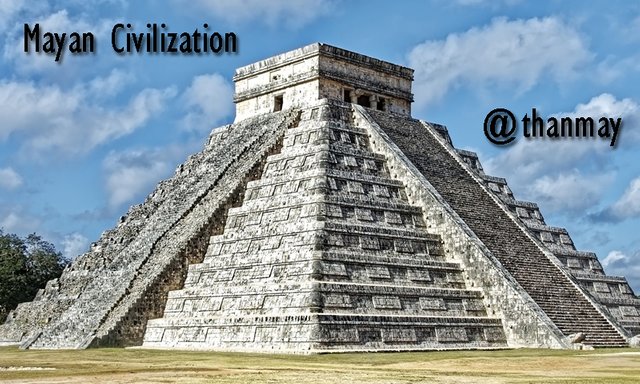Mayan Civilization

When referring to the Mayan civilization, we automatically speak of the Mesoamerican civilization which had its place of development in one of the main regions of what we currently know as Mexico; to be more precise, it was located in the Yucatan Peninsula and all the regions close to this context.
This civilization developed in large cities formed by temples and the main ones had palaces where priests, nobility and servants carried out their social, work and cultural life. As far as the citizens who did not hold positions are concerned, they lived in the small towns that were around the Yucatecan peninsula.
According to the geographical studies that were carried out on this civilization we can learn that it expanded throughout the southeast of Mexico, very close areas of Guatemala and Belize while it ventured north of what is now Honduras and El Salvador. It should be noted that, although the Mayan civilization was not as extensive as others, what it was and continues to be is: a dominant culture.
The Mayan civilization was able to expand its entire culture in the tenth century AD, this being the period of Mesoamerican periodization and splendor. It should be noted that, the Mayans stood out for being the largest astronomers we have had in history since, through precise calculations and at the same time, the observation technique, they managed to make and later establish two of the most important calendars that exist in human history, these being the lunar and solar.
Another curious fact that today we can know about the aforementioned calendars is that both are used to determine exactly all the phenomena of astronomical origin in order to know when the eclipses (solar-lunar) and equinoxes are going to take place.
Referring to the large pyramids that today we can know if we go to Mexico we highlight that they were the temples where the Mayans lived and to have a more concrete idea of how high they were, the temple of Haguar de Tikal has a height measure that reaches 47 meters.
Something very indispensable to limit in the Mayan civilization is its religion since, this was polytheistic. They had a pantheon where they located all the gods and, those who worshiped the most were those linked to the divinity since, through them they acquired precise answers about agriculture and fertility. A curious fact about the Mayan religion is that it was recorded several years after the process of conquest.
In another order of ideas, although the political organization of the Maya was City-State, they at no time managed to have a totally unified State and in view of this, it was normal to see that all the territories were autonomous cities which were under the guidelines of the Halach Uinic, a term that refers to a true man.
The social organization was hierarchized by the nobility, the priests, ordinary people and last but not least, the slaves. It should be noted that, the main economic activity that they carried out was agriculture for this reason, they had extensive land and most obtained them through the slash-burn system. Among the crops they made, cassava, black beans, chili, corn, cotton, avocado, among other species, stood out.
This civilization stood out in architectural works that today we can continue to observe in squares, churches, buildings and temples. Similarly, the Maya were consecrated in the carving of bones, woods and various representations of gods. Both painting and ceramics have a large space in the Mayan culture and it has been considered that they were responsible for perfecting these techniques.
To conclude, after the Mayan civilization was consecrated, during the first millennium it was surprised by a very abrupt collapse which caused most of the cities that were in the central area of the Yucatecan peninsula, their inhabitants to make the decision to abandon them thus causing the development of social conflicts and, as time progressed, it was impossible to continue to sustain itself.
Among the last rebellions that the Mayan civilization had, we can point out that it was the slash and burn activities that generated the largest famine and environmental imbalance that had come to live in the Yucatan Peninsula.


